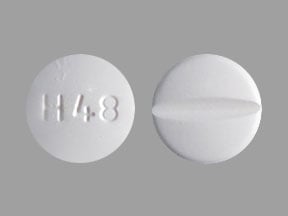
Sulfamethoxazole-trimethoprim Coupons & Savings Card – Discount Prices from $4.39
Generic for: Bactrim, Bactrim ds, Sulfatrim pediatric
My prescription
Edit
400-80MG, Sulfamethoxazole-trimethoprim (30 Tablets)
Select pharmacy

CVS
$18.87
COUPON PRICE
Walmart
$4.39
COUPON PRICE
Walgreens
$9.15
COUPON PRICE
Albertsons
$9.76
COUPON PRICEFree Sulfamethoxazole-trimethoprim Savings Card

Walmart
$4.39
Show this coupon to your pharmacist
ID
LH97F1E327
PCN
CHIPPO
BIN
019876
GRP
LHX
This coupon is not insurance
More prescriptions for urinary tract infection
More prescriptions for urinary tract infection
Price history for Bactrim (brand) & Sulfamethoxazole-trimethoprim (generic)
30 Tablets, 400-80MG
Average retail price for Bactrim
Average retail price for Sulfamethoxazole-trimethoprim
Average SaveHealth price for Sulfamethoxazole-trimethoprim
Our price history data is based on aggregated prescription data collected from participating pharmacies in America. Our prescription data updates daily to reflect the latest price changes. If you notice a missing data point, it means there wasn't sufficient data available to generate a monetary value for that date.
We analyzed Sulfamethoxazole-trimethoprim prices for (400-80MG, 30 Tablets) over the last 12 months. The average retail price was $25.74, while the average price using the SaveHealth discount card was $11.96. That's a savings of approximately 53.54% when using our Sulfamethoxazole-trimethoprim coupon.
Compared to the generic version, Bactrim had an average price of $63.07 over the same time period. With the SaveHealth savings card, Sulfamethoxazole-trimethoprim is 81.04% cheaper on average than Bactrim.
*Retail prices are based on pharmacy claims data, and may not be accurate when we don't have enough claims.
Sulfamethoxazole-trimethoprim dosage forms
Dosage Quantity Price from Per unit 400-80MG 30 Tablets $4.39 $0.15 400-80MG 60 Tablets $6.28 $0.10 400-80MG 90 Tablets $14.67 $0.16 800-160MG 30 Tablets $4.32 $0.14 800-160MG 60 Tablets $6.14 $0.10 800-160MG 90 Tablets $7.96 $0.09
| Dosage | Quantity | Price from | Per unit |
|---|---|---|---|
| 400-80MG | 30 Tablets | $4.39 | $0.15 |
| 400-80MG | 60 Tablets | $6.28 | $0.10 |
| 400-80MG | 90 Tablets | $14.67 | $0.16 |
| 800-160MG | 30 Tablets | $4.32 | $0.14 |
| 800-160MG | 60 Tablets | $6.14 | $0.10 |
| 800-160MG | 90 Tablets | $7.96 | $0.09 |
Sulfamethoxazole-trimethoprim Warnings
The information below highlights critical safety considerations for using sulfamethoxazole/trimethoprim. Patients and healthcare providers should carefully evaluate these warnings to mitigate potential risks.
Pregnancy Advisory: This antibiotic is not recommended for use during pregnancy due to significant risks of developmental harm to the unborn child. It is crucial to inform your healthcare provider if you are pregnant, planning to become pregnant, or discover you are pregnant while taking this medication, so alternative treatments can be considered.
Allergic Reactions and Skin Conditions: There is a possibility of experiencing severe allergic responses, such as anaphylaxis and facial swelling. Additionally, rare but serious skin conditions like Stevens-Johnson syndrome (SJS) and DRESS syndrome may occur. Individuals with a sulfa allergy are at heightened risk.
Thrombocytopenia and Bleeding Risk: The medication may lead to reduced platelet counts, increasing the risk of significant bleeding, particularly if combined with other drugs that elevate bleeding risk, such as aspirin or warfarin. Platelet levels typically recover within a week after discontinuation of the antibiotic.
C. difficile Infection Risk: The use of this antibiotic can disrupt normal gut flora, heightening the risk of Clostridioides difficile infection, which can result in severe diarrhea.
Electrolyte Imbalance: High dosages of the drug may cause elevated potassium and reduced sodium levels. Immediate medical consultation is recommended if symptoms like weakness, numbness, headache, or confusion develop.
Blood Cell Disorders: Certain individuals, particularly those with glucose-6 phosphate dehydrogenase (G6PD) deficiency, older adults, individuals with kidney or liver issues, those with poor nutrition, or regular alcohol consumers, may experience blood cell-related complications.
Phenylketonuria (PKU) Precaution: Individuals with PKU must adhere to a low-protein diet while on this medication, as it can exacerbate difficulties in breaking down phenylalanine.
Contraindications
The following conditions make the use of sulfamethoxazole/trimethoprim inadvisable due to potential severe health risks. Consultation with a healthcare provider is essential if any apply:
- Allergic reaction to sulfa drugs
- History of low platelet counts with trimethoprim or sulfa medications
- Megaloblastic anemia from low folic acid
- Severe liver or kidney disease
- Children under 2 months old
- Concurrent use of dofetilide (Tikosyn)
Sulfamethoxazole-trimethoprim Side Effects
Common side effects:
- nausea
- vomiting
- diarrhea
- loss of appetite
- rash
- hives
- increased sensitivity to sunlight
Less common but important to monitor:
- muscle or joint pain
- fatigue
- weakness
- trouble sleeping
- changes in blood sugar levels
Serious side effects:
- severe allergic reactions
- C. difficile-related diarrhea
- high potassium levels
- low sodium levels
- kidney problems
- Stevens-Johnson syndrome
- blood disorders
- liver damage
- lung injury
Sulfamethoxazole-trimethoprim Interactions
Interactions with high risk of serious adverse effects and should be avoided:
- Dofetilide
- Levomethadyl
- Methenamine
Interactions with moderate risk that may require dose adjustment, closer monitoring, or timing changes:
